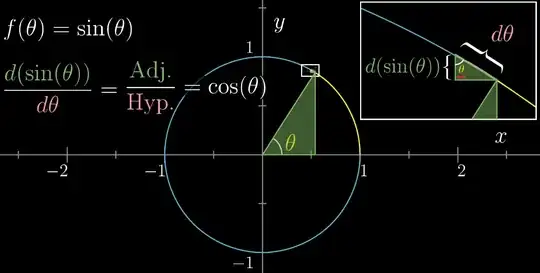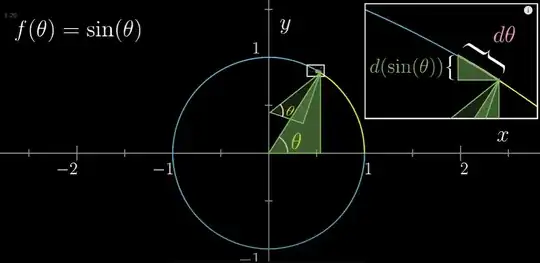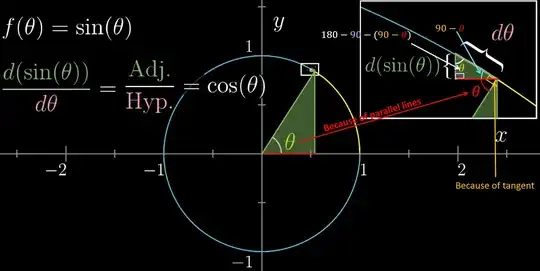I was going through this 3b1b video on obtaining derivative formula through geometrical intuition. While discussing how to obtain $\frac{d}{d\theta}\sin(\theta)$, Grant draws following diagram:
I did not understand how the angle inside the smaller triangle (red underlined at top right corner) formed by $d\theta$ is also $\theta$. Grant also does not seem to have discussed the same in the video. He only showed the animation equating the two angles of smaller and larger triangle:
What I am missing here?


